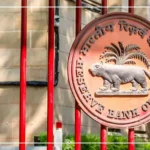The impact of the COVID-19 pandemic that began in 2020 is still felt around the world. While the damage caused by the virus hasn’t fully healed, the spread of the virus has started once again.
A new wave of COVID-19 is being observed in many parts of Asia, with significant increases in cases in cities like Hong Kong and Singapore.
Similarly, cases are also being reported in India. As of May 19, there are 257 active cases in the country, prompting the government to increase surveillance.
COVID-19 in India
India’s current active COVID-19 cases are the highest in the past year. The majority of these cases are in Kerala, Maharashtra, and Tamil Nadu. However, there is no official confirmation that the JN.1 variant is spreading in India.
Meanwhile, the surge in countries like Singapore and Hong Kong is believed to be due to the LF.7 and NB.1.8 variants, both of which are sub-variants of the Omicron variant.
These variants are linked to the JN.1 variant, which is a part of Omicron BA.2.86.
The World Health Organization (WHO) previously stated that the JN.1 variant and similar variants have the ability to escape the immune system, but there’s no evidence yet suggesting they cause more severe illness than earlier Omicron variants.
The JN.1 variant was first identified in August 2023 and was declared a “variant of interest” by the WHO in December 2023.
Symptoms of the New Variant
The symptoms of the JN.1 variant are similar to those of other COVID-19 variants. They can last anywhere from a few days to several weeks.
Here are some common symptoms of the JN.1 variant:
- High fever
- Sore throat
- Nasal congestion or runny nose
- Dry cough
- Extreme tiredness and weakness
- Severe headache
- Stomach pain
- Changes in taste and smell
- Body aches and muscle tension
Who is Most at Risk?
Older adults are more vulnerable to this new COVID-19 variant. People with weakened immune systems are also at higher risk, including those with conditions like cancer, HIV, or those who have had organ transplants.
People with chronic conditions such as diabetes, heart disease, or lung disease are also at greater risk.
Current Situation in India
The situation in India is under control, with only 257 active COVID-19 cases as of May 19, 2025, which is relatively low considering India’s large population.
The majority of these cases are mild, and none of the patients required hospitalization. The Indian government has reassured the public that the situation is under control but emphasizes the importance of maintaining vigilance.
























